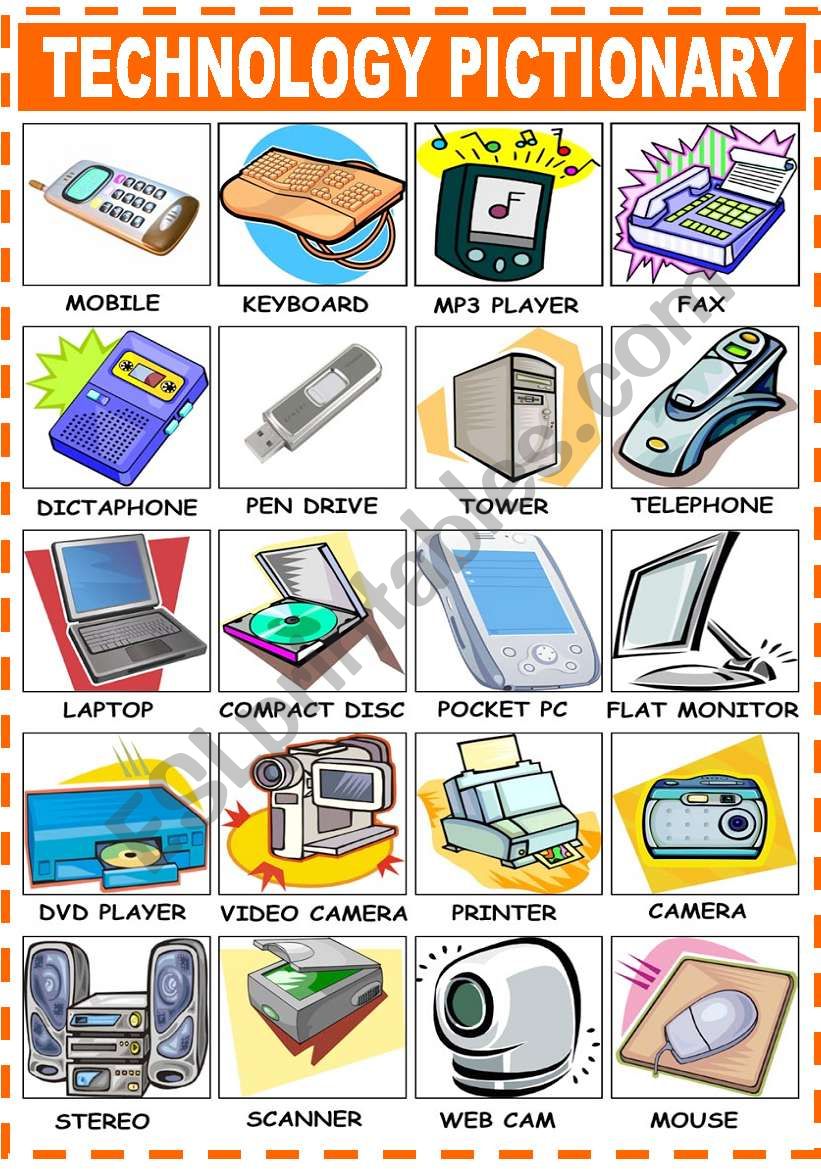
Mastering the Digital Lexicon: The Indispensable Role of Technology Vocabulary Worksheets
In an age defined by rapid technological advancement, staying abreast of the latest innovations is not merely an advantage, but a necessity. From artificial intelligence to blockchain, cybersecurity to cloud computing, the lexicon of technology is constantly expanding, creating a formidable barrier for those not fluent in its specialized terminology. Understanding this lexicon is crucial not only for professionals in tech-related fields but also for students, educators, and the general public navigating an increasingly digital world. The demand for effective learning tools, particularly technology vocabulary worksheets, has never been greater. These structured educational resources serve as invaluable instruments in demystifying complex concepts, fostering digital literacy, and empowering individuals to confidently engage with the technological landscape.
This article delves into the profound importance of technology vocabulary, explores the diverse types and benefits of well-designed worksheets, offers insights into their creation and integration into various learning environments, and considers the future of tech vocabulary acquisition.
The Imperative of Tech Fluency in the Digital Age

The omnipresence of technology in modern life underscores the critical need for a robust understanding of its vocabulary. Without it, individuals risk being left behind in a world where digital communication, online services, and technological innovations are fundamental.
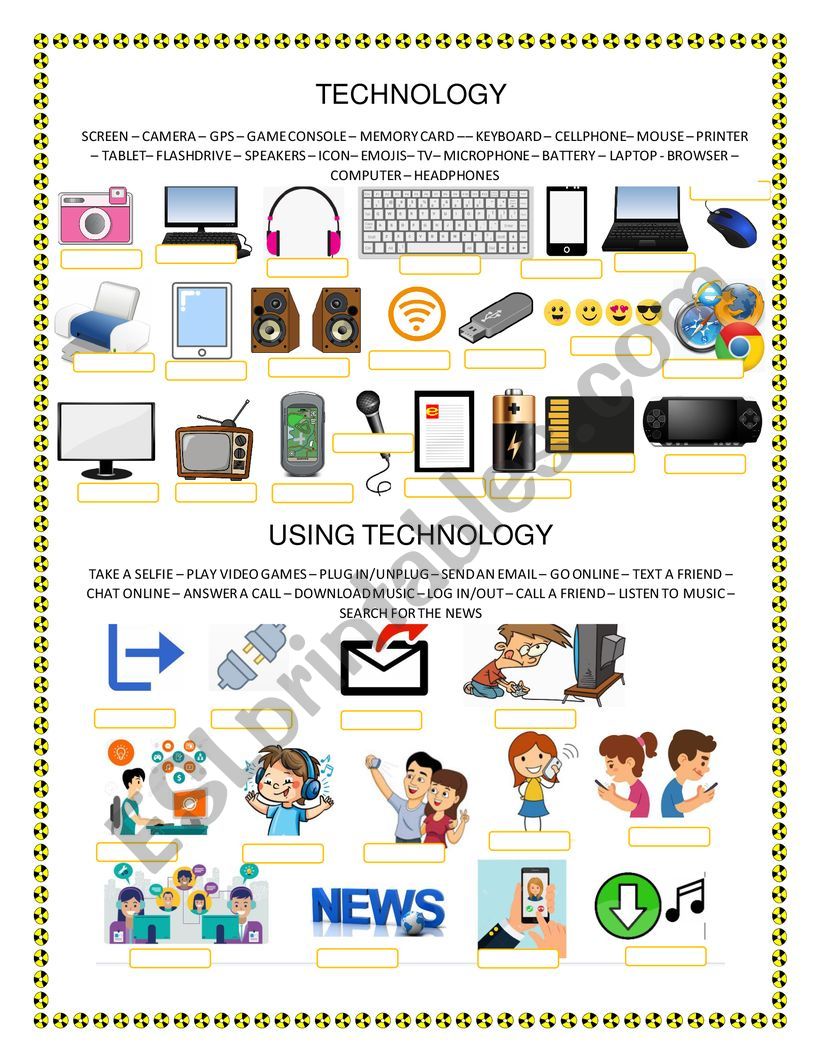
- Enhanced Digital Literacy: A strong grasp of tech vocabulary is the cornerstone of digital literacy. It allows individuals to understand news reports about technological breakthroughs, comprehend privacy policies, troubleshoot common computer issues, and make informed decisions about technology adoption.
- Improved Communication: In professional settings, particularly within STEM fields, precise communication is paramount. Knowing terms like "API," "algorithm," "GUI," or "encryption" facilitates clear discussions, collaboration, and problem-solving. Even in everyday life, understanding terms like "phishing," "malware," or "broadband" enables safer and more efficient online interactions.
- Career Preparedness: Many jobs across various sectors now require a baseline understanding of technology. From marketing professionals utilizing analytics tools to healthcare workers managing electronic health records, a command of tech terminology is often a prerequisite. For those aspiring to careers directly in tech, this foundational vocabulary is non-negotiable.
- Critical Thinking and Problem Solving: Understanding the terminology behind technological concepts enables deeper critical thinking. It allows individuals to analyze how systems work, identify potential issues, and conceptualize solutions. For instance, understanding "latency" helps in diagnosing network issues, while knowing "data privacy" fosters ethical considerations in software development.
- Navigating the Future: Technology is not static; it evolves at an exponential pace. A solid vocabulary base provides the framework upon which new terms and concepts can be built, ensuring continuous learning and adaptation to future innovations.
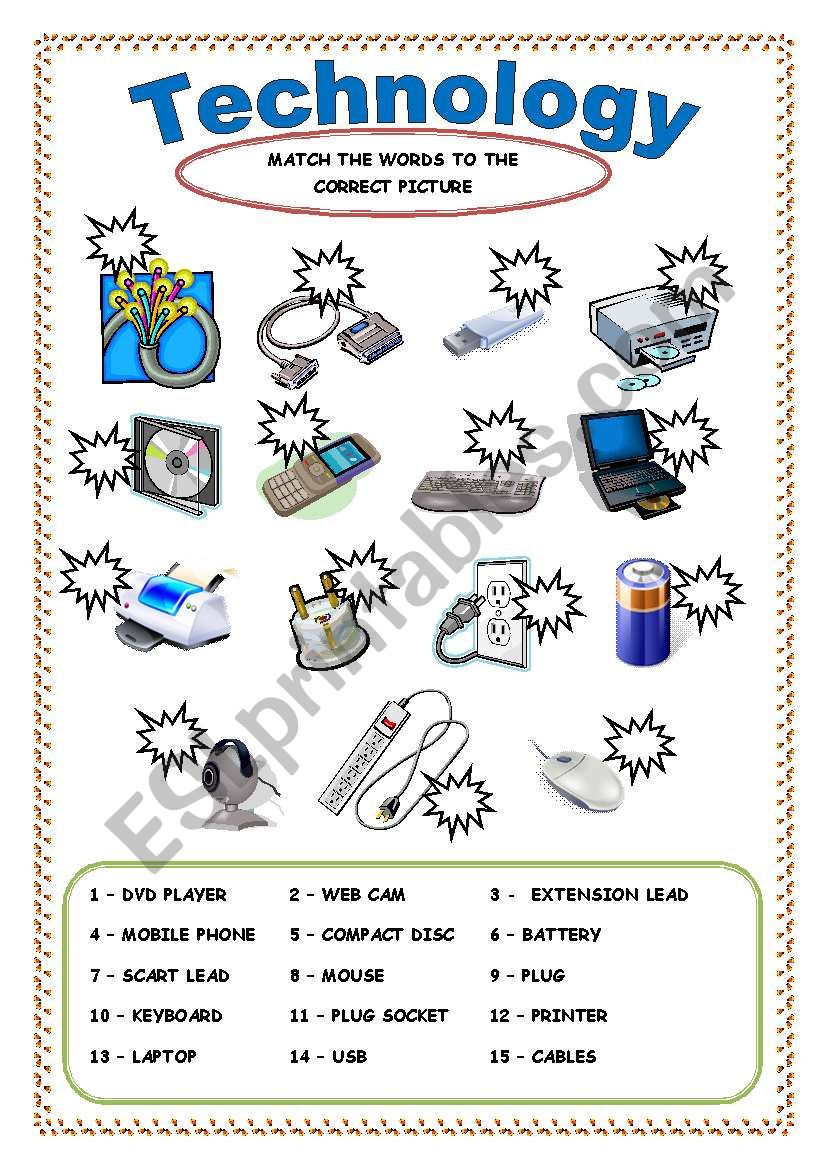


The Power of Structured Learning: Why Worksheets Excel
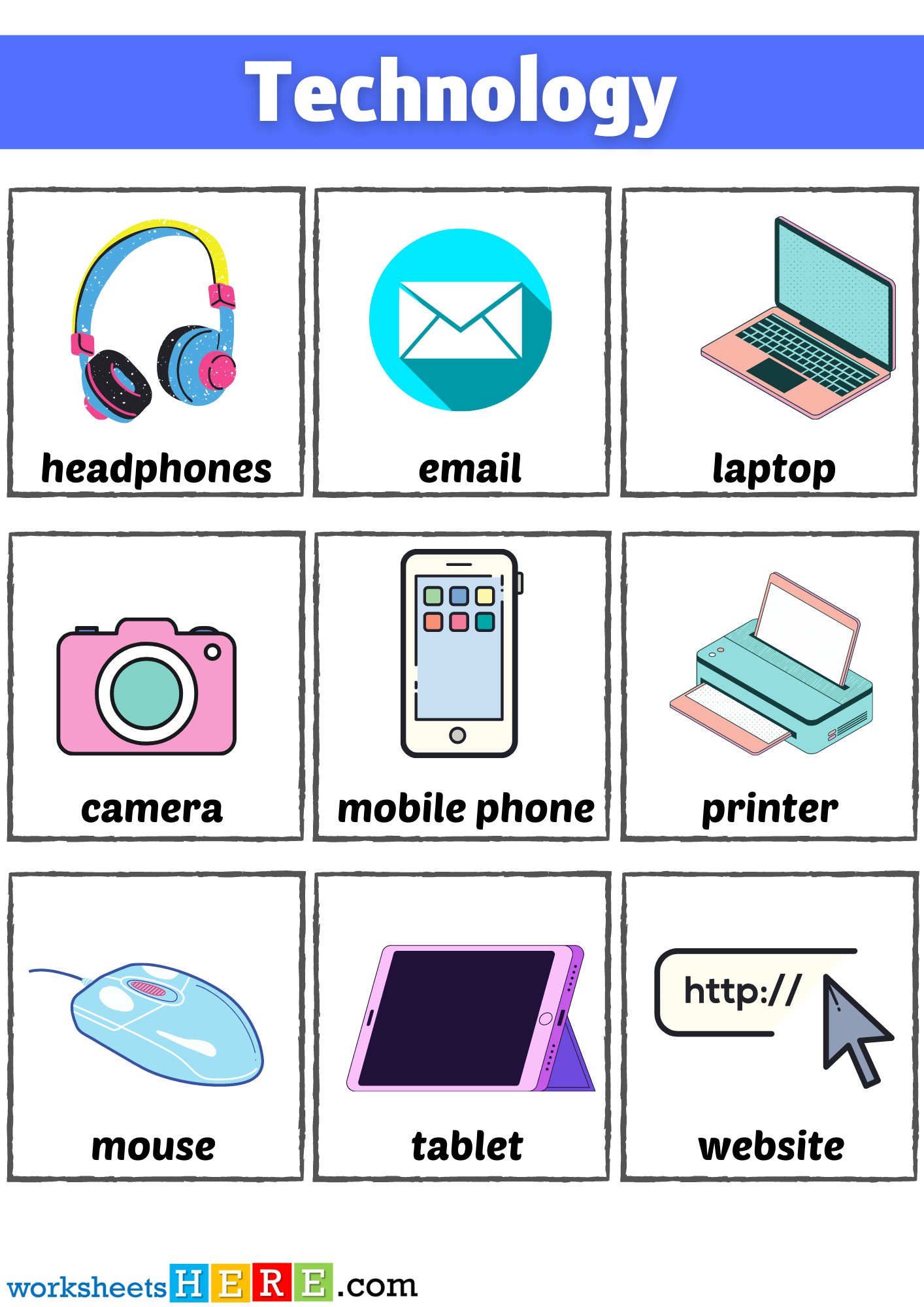
While there are numerous ways to acquire new vocabulary, from reading tech blogs to watching documentaries, technology vocabulary worksheets offer a uniquely structured, engaging, and effective approach. They transform passive learning into an active process, promoting deeper retention and understanding.
- Active Recall and Reinforcement: Worksheets necessitate active engagement. Rather than simply reading definitions, learners must retrieve information from memory to complete exercises, reinforcing new terms and their meanings.
- Contextual Learning: Many worksheets present vocabulary in context, through sentences, scenarios, or case studies. This helps learners understand not just what a word means, but how it is used in real-world applications.
- Variety of Learning Styles: Worksheets can be designed to cater to different learning preferences. Visual learners benefit from matching images to terms, kinesthetic learners from hands-on labeling, and linguistic learners from sentence completion and definition exercises.
- Self-Paced and Flexible: Learners can work through worksheets at their own pace, reviewing challenging sections as needed. This flexibility makes them ideal for both classroom settings and independent study.
- Measurable Progress: Worksheets provide a tangible way to track progress. Completing exercises correctly offers a sense of accomplishment and highlights areas that require further attention.
- Repetition Without Redundancy: Through diverse exercise types, worksheets allow for the repetition of key terms in varied formats, preventing monotony while solidifying knowledge.

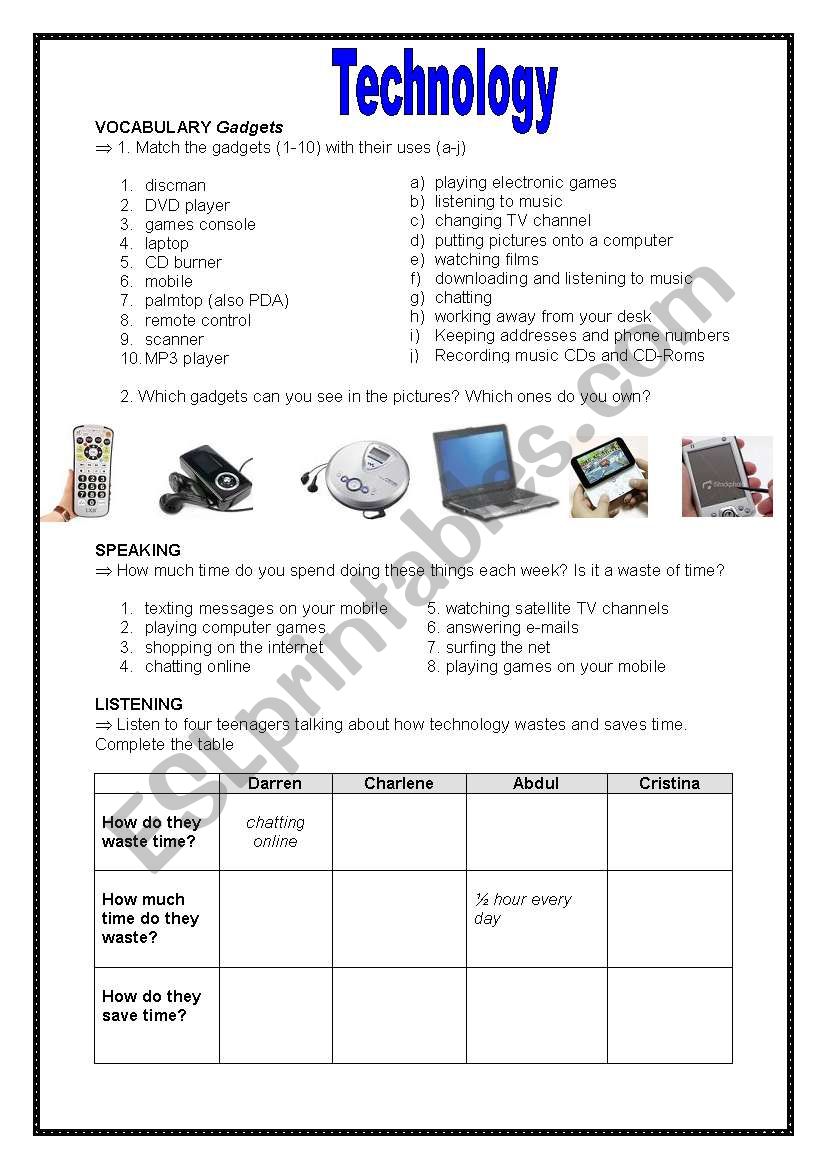
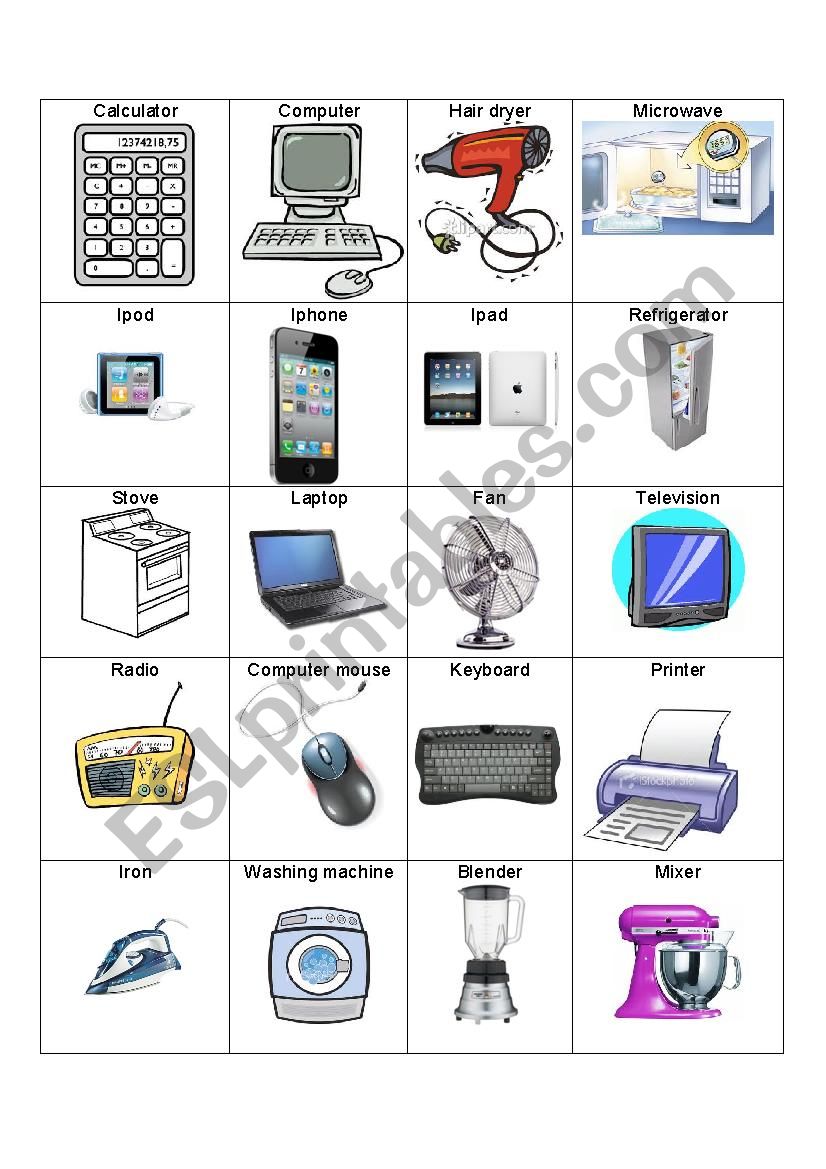
Anatomy of Effective Technology Vocabulary Worksheets: Types and Examples
Effective technology vocabulary worksheets are characterized by their clear structure, relevance, and variety of exercise types. Here are some common and highly effective formats:
-
Matching Exercises:
- Concept: Learners match a tech term from one column to its definition, synonym, or an illustrative image in another column.
- Examples:
- "CPU" matched with "The brain of the computer."
- "RAM" matched with "Temporary memory."
- "Cloud Computing" matched with an icon representing cloud storage.
-
Fill-in-the-Blanks:
- Concept: Sentences related to technology have key terms missing, and learners must choose the correct word from a word bank or recall it independently.
- Examples:
- "A __ is a program designed to harm your computer system." (malware)
- "The internet uses the __ protocol to transfer data." (TCP/IP)
- "Data stored on remote servers and accessed over the internet is called __ storage." (cloud)
-
Crossword Puzzles and Word Searches:
- Concept: Engaging games where definitions serve as clues for crossword puzzles, or learners find hidden tech terms within a grid of letters.
- Examples:
- Crossword Clue: "Software that protects against viruses." (Antivirus)
- Word Search: Finding terms like "BYTE," "PIXEL," "ROUTER," "FIREWALL."
-
Multiple Choice Questions:
- Concept: Learners select the correct definition or contextual usage of a tech term from several options.
- Examples:
- "What does ‘GUI’ stand for? a) General User Interface b) Graphical User Interface c) Global User Interactivity d) Gateway User Integration." (b)
- "Which of these is an example of an input device? a) Printer b) Monitor c) Keyboard d) Speaker." (c)
-
Sentence Completion/Contextual Usage:
- Concept: Learners use given tech terms to complete sentences in a way that demonstrates their understanding of the word’s meaning and appropriate context.
- Examples:
- "Before sending the email, I made sure to __ the attachment." (upload)
- "My new laptop has a solid-state drive (SSD), which makes it incredibly __." (fast/efficient)
-
Categorization/Classification:
- Concept: Learners sort a list of tech terms into predefined categories (e.g., hardware vs. software, input vs. output devices, types of cyber threats).
- Examples:
- Hardware: CPU, RAM, Motherboard
- Software: Operating System, Web Browser, Spreadsheet
- Cyber Threats: Phishing, Malware, Ransomware
-
True/False Statements:
- Concept: Learners evaluate statements about tech concepts and terms for accuracy.
- Examples:
- "RAM is a type of permanent storage." (False)
- "The internet is a global network of computers." (True)
-
Image Labeling/Diagrams:
- Concept: Learners label parts of a diagram (e.g., a computer, a network setup, a smartphone interface) with the correct tech terms.
- Examples: A diagram of a computer with arrows pointing to the monitor, keyboard, mouse, tower, etc., to be labeled.
Crafting Pedagogically Sound Technology Vocabulary Worksheets
Designing effective worksheets requires more than just listing terms and definitions. It involves pedagogical considerations to maximize learning outcomes:
- Target Audience: Tailor the complexity and content to the age, prior knowledge, and learning objectives of the learners (e.g., elementary school, high school, university, professional development).
- Relevance and Currency: Given the rapid pace of technological change, ensure the vocabulary is current and relevant to today’s tech landscape. Outdated terms can be confusing or misleading.
- Clear Instructions: Provide unambiguous instructions for each exercise.
- Visual Appeal: Use clear layouts, appropriate fonts, and relevant images or icons to make the worksheets visually engaging and easier to navigate.
- Real-World Context: Embed terms within realistic scenarios or examples to demonstrate their practical application.
- Gradual Progression: Start with simpler, foundational terms and gradually introduce more complex concepts.
- Scaffolding: For challenging terms, provide hints, examples, or break down the concept into smaller parts.
- Answer Keys: Include comprehensive answer keys to enable self-correction and independent learning.
- Interactive Elements (for digital worksheets): Utilize drag-and-drop, clickable definitions, or instant feedback mechanisms to enhance engagement.
Integrating Worksheets into Diverse Learning Environments
From elementary school classrooms to professional development seminars, technology vocabulary worksheets can be seamlessly integrated into various learning contexts:
- Classroom Instruction:
- Introduction: Use worksheets to pre-assess existing knowledge or introduce new units.
- Practice: Reinforce concepts taught during lectures or demonstrations.
- Group Work: Encourage collaborative learning and peer teaching.
- Review: Prepare students for quizzes or exams.
- Self-Study and Homework:
- Reinforcement: Allow learners to practice independently outside of structured learning times.
- Flexible Learning: Cater to individual pacing and learning styles.
- Online Learning Platforms (LMS):
- Interactive Quizzes: Convert worksheets into digital, interactive quizzes with immediate feedback.
- Downloadable Resources: Provide printable PDFs for offline practice.
- Gamification: Integrate points, badges, or leaderboards to motivate completion.
- Professional Development:
- Upskilling: Help employees quickly acquire new technical terms relevant to their roles or new software implementations.
- Onboarding: Introduce new hires to the company’s tech stack and terminology.
- ESL/EFL Programs:
- Specialized Vocabulary: Provide targeted practice for non-native English speakers who need to understand tech terms in an English context.
Overcoming Challenges in Tech Vocabulary Acquisition
While technology vocabulary worksheets are powerful tools, their effectiveness can be amplified by addressing common challenges in tech vocabulary acquisition:
- Rapid Obsolescence: Technology changes constantly. Worksheets must be regularly updated to remain relevant. Educators and content creators should have systems in place for periodic review and revision.
- Abstract Concepts: Many tech terms represent abstract concepts (e.g., "algorithm," "protocol"). Worksheets should strive to make these tangible through analogies, simplified explanations, and practical examples.
- Engagement and Motivation: While effective, too many traditional exercises can lead to fatigue. Incorporating gamified elements, real-world challenges, and collaborative activities can boost motivation.
- Information Overload: Introducing too many terms at once can be overwhelming. Break down vocabulary into manageable chunks, focusing on core concepts before delving into niche terminology.
The Future Landscape of Tech Vocabulary Learning
The future of technology vocabulary worksheets is likely to be dynamic and highly personalized. We can anticipate:
- AI-Generated Content: Artificial intelligence will increasingly assist in generating customized worksheets based on learner proficiency, specific topics, and desired learning outcomes.
- Personalized Learning Paths: AI-driven platforms will identify individual knowledge gaps and recommend specific worksheets or exercises tailored to those needs.
- Immersive Learning: Virtual Reality (VR) and Augmented Reality (AR) could offer interactive environments where learners can explore digital concepts and vocabulary in 3D, making abstract terms more concrete. Imagine dissecting a virtual computer to learn its components or walking through a simulated network to understand "data packets."
- Gamified Platforms: Learning platforms will continue to evolve, integrating more sophisticated game mechanics, competitive elements, and rewards to make vocabulary acquisition highly engaging.
- Dynamic and Adaptive Worksheets: Digital worksheets will become more adaptive, adjusting difficulty levels and content based on real-time learner performance, providing immediate, intelligent feedback.
Conclusion
In conclusion, the journey to digital literacy is multifaceted, and the role of well-designed technology vocabulary worksheets is undeniably central. They provide the structured, engaging, and repetitive practice necessary to build a robust understanding of the ever-evolving language of technology. By transforming complex jargon into digestible learning units, these worksheets empower individuals across all ages and professions to confidently navigate, understand, and even innovate within the digital realm. As technology continues its relentless march forward, the strategic deployment and continuous evolution of comprehensive technology vocabulary worksheets will remain crucial in bridging the knowledge gap, ensuring that individuals are not just users of technology, but informed participants and active contributors in shaping the future.
